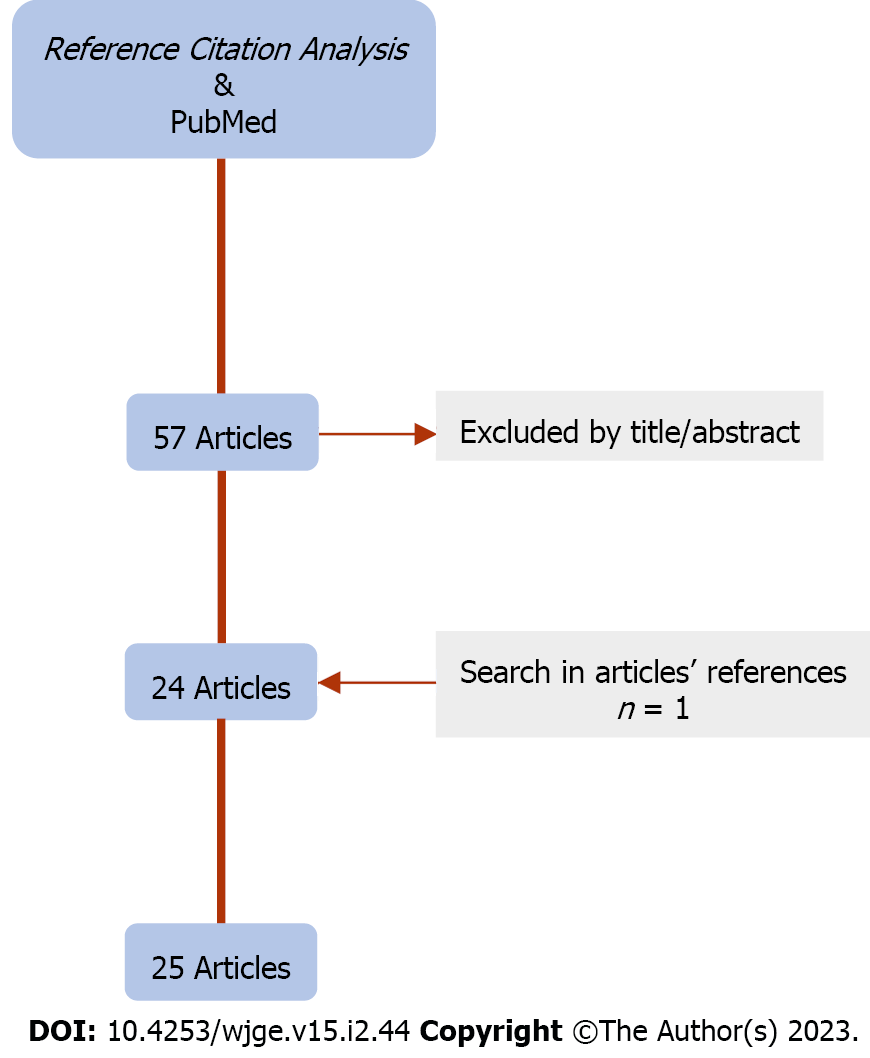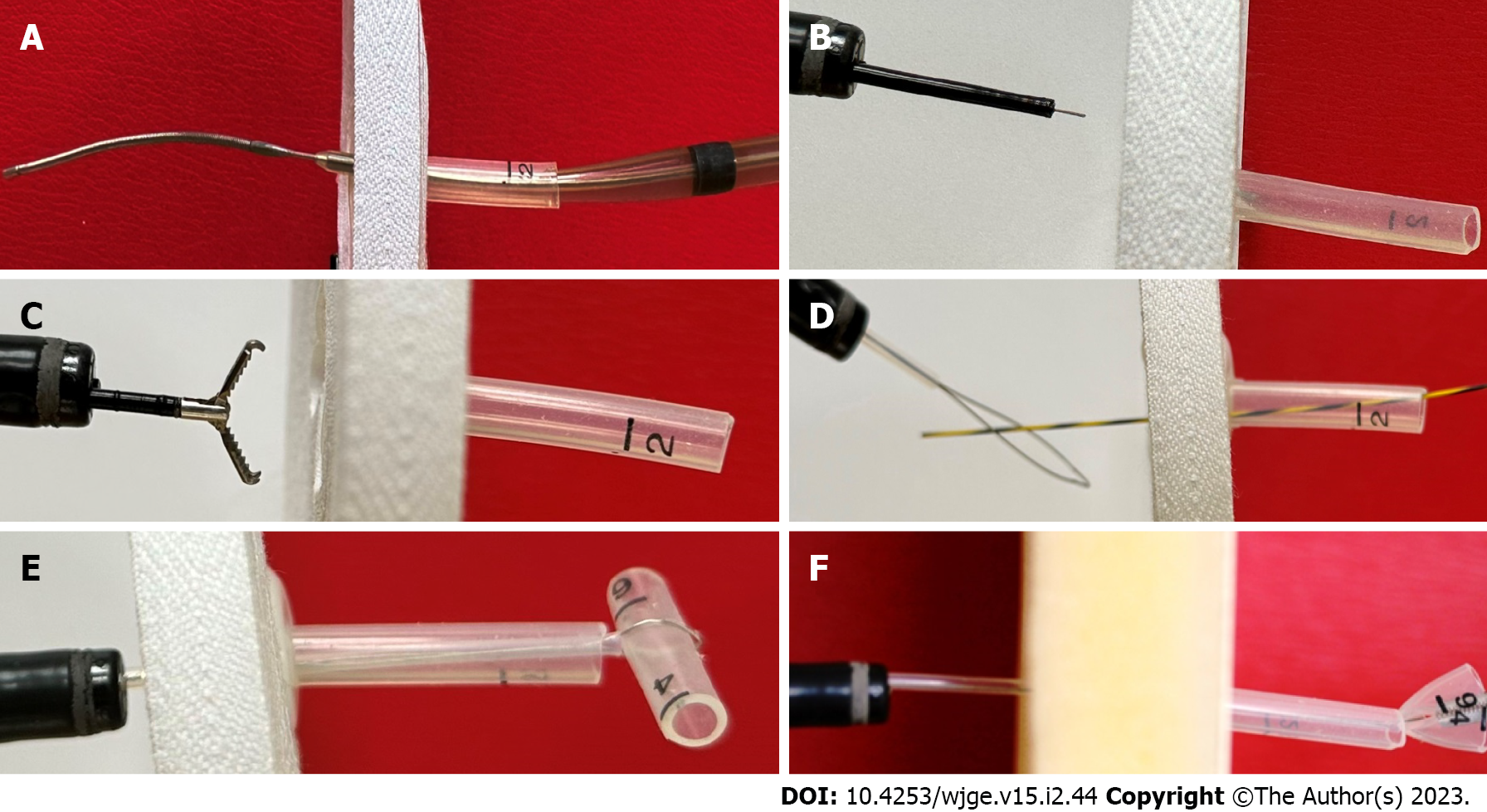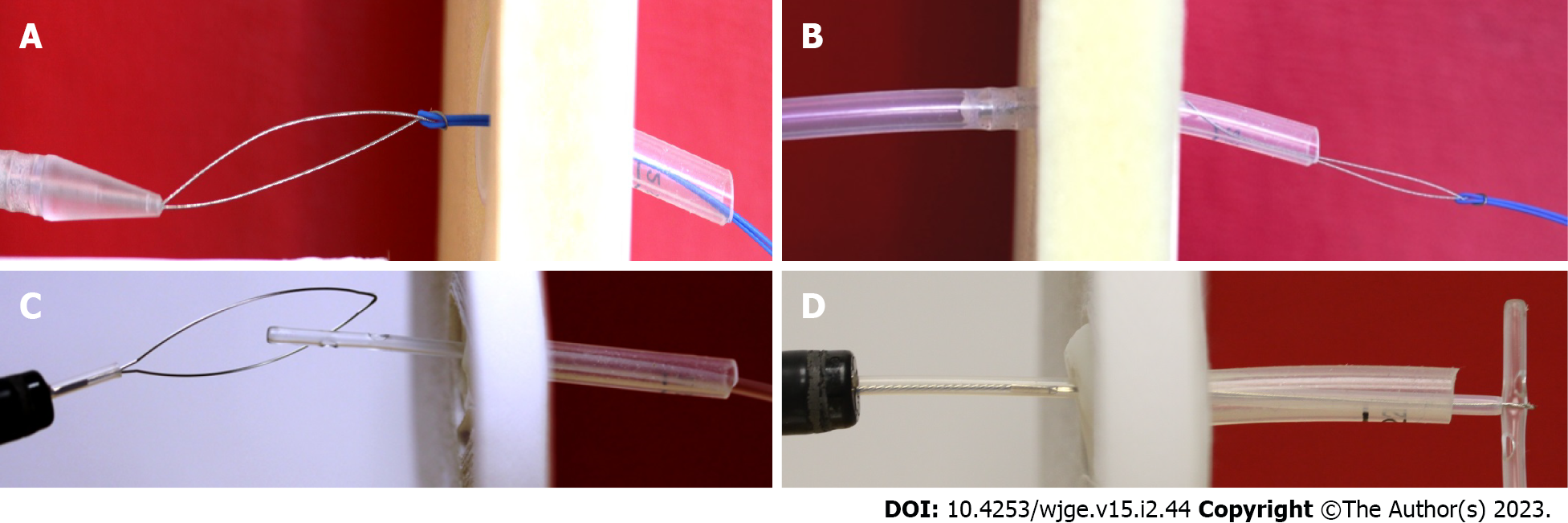Copyright
©The Author(s) 2023.
World J Gastrointest Endosc. Feb 16, 2023; 15(2): 44-55
Published online Feb 16, 2023. doi: 10.4253/wjge.v15.i2.44
Published online Feb 16, 2023. doi: 10.4253/wjge.v15.i2.44
Figure 1 Flow diagram of our Research Strategy.
Figure 2 Description of techniques.
A: The “push” Technique: A Savary dilator loaded over the guidewire forced from the outside towards the gastric lumen to release the bumper into the stomach; B and C: The “needle-knife” technique: A pre-cut device was used first and then an alligator forceps pulls the bumper towards the stomach; D-F: The “push-pull T” technique: A T-piece attached to a snare is used to pull the bumper into the stomach.
Figure 3 Description of techniques.
A and B: The “new PEG against the old” technique: A new, pull-type, gastrostomy pushed the buried bumper from inside the stomach; C and D: The “snare” technique: A polypectomy snare was used to grasp the catheter inserted from the outside. Traction applied to the snare, leads to dislodging the buried bumper.
Figure 4 Description of techniques.
A: A standard papillotome was inserted from the outside under endoscopic control, bent, and drawn back, to perform at least 3 radical cuttings in the mucosa covering the bumper; B: The “balloon dilator” technique: A balloon dilator was endoscopically advanced to meet a guidewire inserted from outside; then was pushed over the guidewire into the tube and inflated to remain impacted. Traction of the balloon allowed the extraction of the bumper.
- Citation: Menni A, Tzikos G, Chatziantoniou G, Gionga P, Papavramidis TS, Shrewsbury A, Stavrou G, Kotzampassi K. Buried bumper syndrome: A critical analysis of endoscopic release techniques. World J Gastrointest Endosc 2023; 15(2): 44-55
- URL: https://www.wjgnet.com/1948-5190/full/v15/i2/44.htm
- DOI: https://dx.doi.org/10.4253/wjge.v15.i2.44












